| Duluth has a very nice
little maritime museum run by the US Army Corps of Engineers. This is a
small marine engine, from the tugboat, Essayons. It is a two cylinder
steam engine with a high pressure and a low pressure cylinder. It must have
been crewed by ex navy men. If it doesn't move, paint it, if it moves, paint
it faster. It looks attractive and makes a visual impact as you enter. | 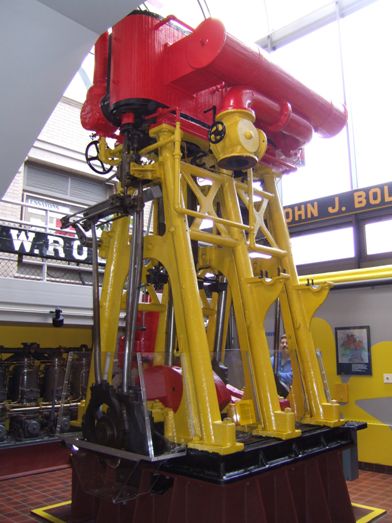 |
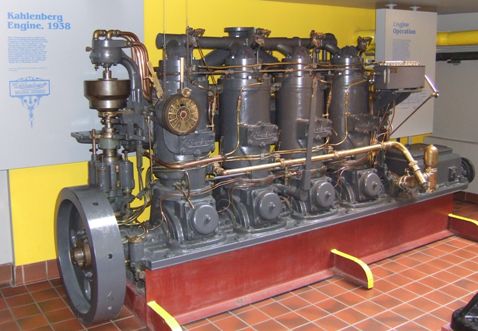 |
This is a slightly more modern 70hp diesel engine from 1938. Made by
Kahlenburg at Two Rivers in Wisconsin, it was fitted to the Corps of
Engineers tug Algoma until 1968 and worked on Lake Michigan and the Fox
River. These engines were favoured because of their low maintenance needs
and high reliability. |
| One of several maps of
the Great Lakes. The interesting bit is at the top showing how much larger
and deeper Lake Superior is compared to the others, and how far it is above
sea level. The sharp drop two thirds of the way along is Niagara Falls. | 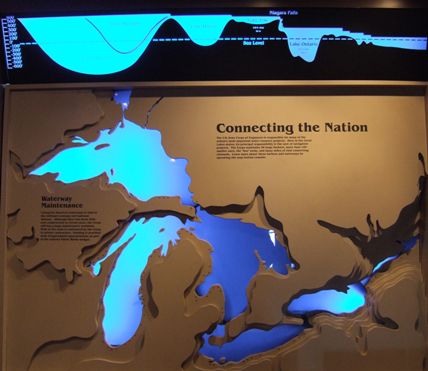 |
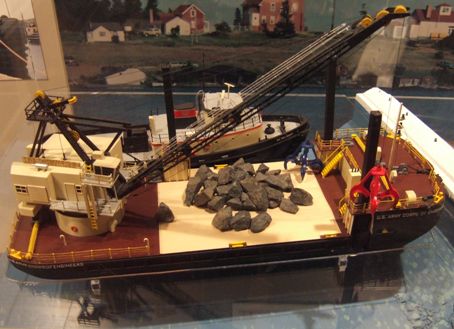 |
It being a Corps of Engineers museum there are a number of models of their
barges used for maintenance of the waterways, which are their
responsibility. This is a derrick barge with an 'orange peel' grapple (red)
used to place large stones weighing up to 15 tons at the foot of breakwaters
to absorb the force of the waves. I think this is a model of the 'Coleman'. |
| This is the merchant
sloop 'Welcome' built in 1775 by John Askin to carry provisions and furs
between Michilimackinac and Detroit. In 1779 it was bought and armed by the
British, as were several dozen similar vessels on the upper lakes before the
war of 1812, and was lost, probably on Lake Huron, in 1781. | 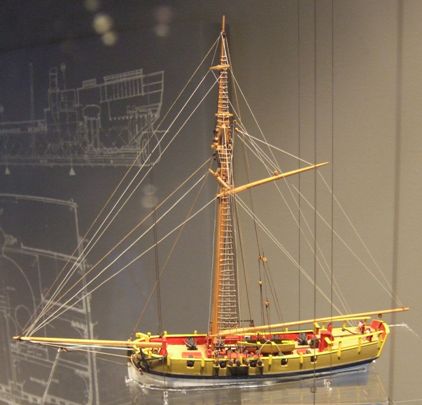 |
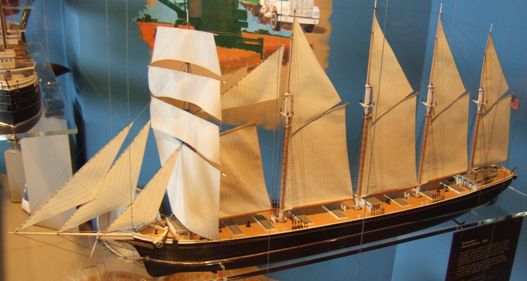 |
This is the schooner David Dows, the first five masted vessel ever built.
She was built at Toledo, Ohio in 1881 but was not as successful as was
hoped. She was lost while carrying a cargo of coal near Chicago in 1889. |
| This is the 476ft
Louisiana Maru, a typical visitor to the Great Lakes after the St Lawrence
Seaway was opened in 1959. |  |
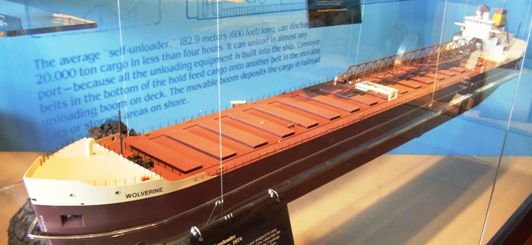 |
This is a typical Great Lakes ore carrier with self unloading capability.
Wolverine is 600ft long and is a 'River' class vessel designed for the
constricted waters of the Cuyahoga River near Cleveland. Using its 280ft
boom with its conveyor belts, it can unload 5,500 tons of taconite pellets
per hour, thus unloading the vessel in 4 hours. |
| These are samples of the
iron ores shipped. The piles in the foreground are of natural haematite as
found in northern Wisconsin. This high grade ore contains as much as 60%
iron. The pellets at the back are taconite which are partially processed
before shipping. Those on the left are the acid type while the ones on the
right are the 'flux' type which have up to 10% of limestone added to improve
blast furnace efficiency. Taconite is a lower grade ore (30% iron) which is
ground finely, concentrated with powerful magnets then mixed with bentonite
clay to make pellets for shipping. The pellets are then fired to convert the
taconite to haematite. Taconite is now more widely used as the higher grade
ores are worked out. | 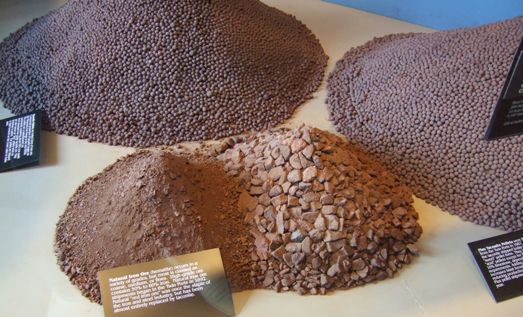 |
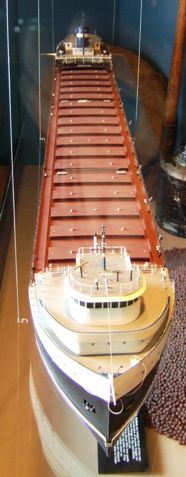 |
Another perspective on the length of these vessels enabling one to
understand why the bridge of a laker is often at the front so the crew can
see where they are going. |
| The ships are loaded on
huge docks with many chutes. These are lowered as required to match the
hatches on the vessels being loaded. Loading is an automated process with
close communication between the vessel and the loadmaster on the dock.
Loading must take place evenly to ensure the vessel is not severely stressed
or unbalanced during the operation. | 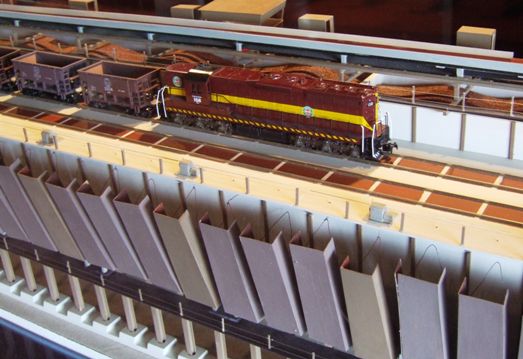 |
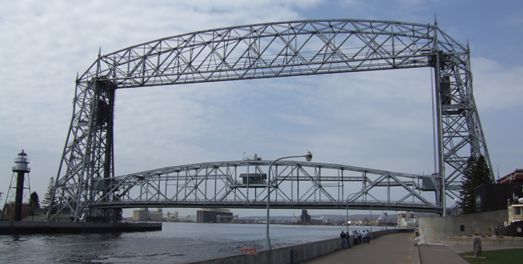 |
Outside is a lifting bridge where the roadway is raised to allow the passage
of ships into the inner docks. Today this happens about 5,500 times each
season (these waters are closed by ice in the winter). We saw it raised
while we were there. |
| A view across to the town
centre of Duluth with, in the foreground, a collection of different styles
of anchors recovered from vessels wrecked in the bay over the years. |
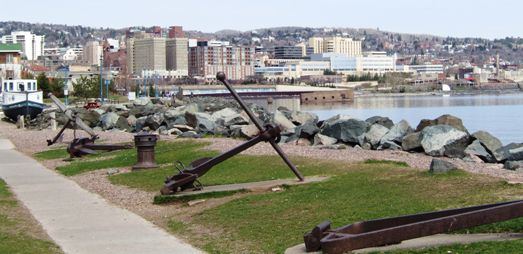 |
|